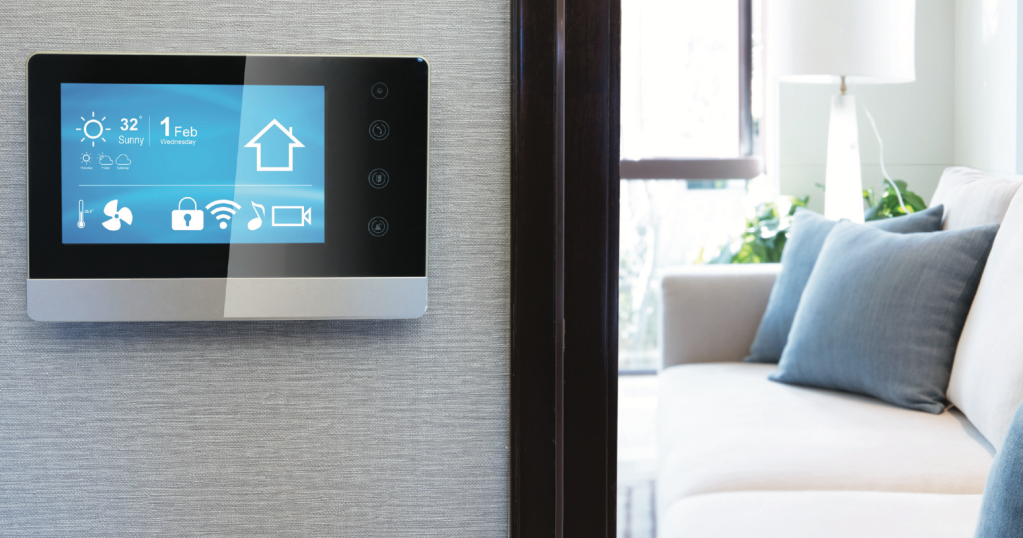Perhaps the defining trend in residential property management over the past ten years has been the rise of smart home technology.

Offering services ranging from playing music to unlocking your door and setting the temperature, these new technologies have made life more convenient and accessible for millions of Americans.
And while millions of homeowners are taking advantage of these services, rental housing providers are also increasingly offering smart-home integration as part of their portfolios.
The increasing interconnectedness of American housing represents nothing short of a revolution in the way the rental housing industry manages its properties and serves its residents. And it’s crucial for property managers to stay abreast of the latest technology so they can continue to offer their residents the best possible experience.
A changing rental experience
Smart home devices have revolutionized the residential experience for tenants of both single-family and multifamily rentals in recent years. From Amazon’s Alexa devices to Nest thermostats, the devices have exploded in popularity. Americans now expect to be connected everywhere — especially their homes.
Some smart-home solutions are specific to either the single-family or multifamily industry — SFR companies, for instance, need tailored offerings to manage a disparate collection of properties throughout a market, while multifamily operators face a different set of questions, such as how to efficiently manage a network of hundreds of Nest thermostats in a single building.
As smart-home technology was reaching critical mass across the country, more and more Americans were making the decision to rent their home: the homeownership rate today is 64.1%, down from 69% in 2004.
One in five Americans now say they don’t plan to buy a home in their lifetime.
One major reason for that shift is the improved resident experience brought on by professionalized property management and innovative technologies. The industry’s leasing companies and accompanying service providers are working to offer a best-in-class housing experience before a lease is ever signed. That starts with self-showing technology, allowing prospective renters to visit their dream home on their own time, without having to coordinate a schedule with a property manager.
And once the renter signs the lease, the same technology they’ve already used for the tour can be used to continue accessing their home.
“Our industry is customer service driven; smart home technology can help create a holistic solution to provide our renters additional security, greater convenience and increased economic efficiency,” said Manjula Perera, Progress Residential vice president of technology and chair of the National Rental Home Council’s Technology Committee.
“Separately, our having improved customer data should help us to better serve our residents over time, as it advances our knowledge of our customers and helps us better satisfy their wants and needs,” Perera said.
“As smart home technology continues to improve and become more ubiquitous, it will help provide us with better real-time information on our customers and properties,” he said.
The adoption of smart-home technology across Progress’ portfolio, which encompasses more than 30,000 homes in markets across the country, demonstrates the extent to which large-scale rental housing operators can offer resident benefits at a scale unmatched by their smaller peers. Typically, the ability to customize your home has been a perk of homeownership. But thanks to this new generation of technological solutions, it is increasingly possible for hundreds of thousands of renters to access the same benefits.
These choices are specific and deeply personal for every renter: As smart home devices have grown in prevalence, so too has the number of possible combinations a user might have.
A renter who has an Alexa device and an iPhone will need a technology solution that works for them just as well as a renter with a Google Home and a Google cell phone.
To offer a solution that works for every renter, smart-home providers need to make customization a major priority.
PointCentral, a provider of enterprise smart home solutions, offers a platform that supports all three voice platforms (Google, Apple, Amazon), with applications for Apple Watch, Apple TV and Amazon Fire TV.
And the platform supports add-on hardware devices ranging from indoor and outdoor video cameras to garage door openers to sprinkler systems.
Finding solutions to critical problems
It’s not just about being able to play music or turn on the lights with the sound of your voice.
A connected apartment or house can be a game-changer in an emergency. But SmartRent, which recently received a strategic investment from the Amazon Alexa Fund, describes what users should do to maintain their safety through the use of smart home technology:
If a resident loses their phone, we suggest they change their password when they redownload the app. We also offer two factor authentication and biometrics login options so that residents can be assured that no one but them can access their home. The option to manually type in their access code is always an option if a resident forgets their phone as well. If they have no phone and do not remember their access code, the site staff can use their code to get the resident into the home. Residents may also call our support line or use smartrent.com/lockout to get an emergency code.
Smart home providers are also helping rental housing operators and law enforcement tackle the challenge of fraud. Fraudulent practices are unfortunately prevalent in the rental housing industry, but NRHC and its members are working on multiple fronts to combat the problem. Smart home vendors are a key component in this fight, implementing solutions that help renters, owner-operators and law enforcement in the fight against fraud.
Rently, which offers self-showing solutions for property managers, outlined the following process for helping the industry’s anti-fraud efforts:
We also take steps to keep bad actors from misusing our self-showing capabilities. When a prospect inquires on any of the listing sites, we send them an auto response message via email. From the auto response, the prospect sets up their Rently account and a time they wish to see the property. In order to create a Rently account, a prospect must upload a photo of the front and back of a government issued ID, a credit card, and a selfie. This allows our security software team to verify prospects’ identities and block any “bad actors” from accessing our clients’ properties.
Smart and getting smarter
The trend is clear: as more and more renters demand these offerings, rental housing operators will need to offer best-in-class smart home benefits or risk losing market share to their competitors.
“It is no longer a question of whether the ROI justifies the expense, rather it is a matter of with whom to partner and when is the best time to implement,” Perera said. “Smart home technology will allow us to serve our customers better, while increasing efficiency of energy and labor, and reducing long-term costs of operations.”
As companies identify new ways to put smart-home technology to work, the rental housing industry will continue to be on the front lines of these innovative shifts that are changing the ways Americans work, live and play — for the better.





